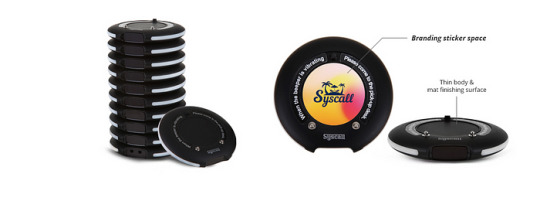#syscall
Explore tagged Tumblr posts
Note
If you receive this, you make somebody happy! Go on anon and send this to 10 of your followers who make you happy or somebody you think needs cheering up. If you get one back, even better <3
ty to whoever sent this uaaaaaa
My brain has been exploding more than usual because the end of the semester is approaching,,, I still have so much work to get done :') It's comforting to know that someone's thinking of me, and I hope you know that you're appreciated as well <3
#ham says words#< woah me when i say words#.data .align 0 heart: .asciiz '<3'#li $v0 4 la $a0 heart syscall#thats mips assembly to print a <3 for you mwah
3 notes
·
View notes
Text
This is underselling how bad/funny internet security was 20 years ago. You know how Flash Player got discontinued for being a giant exploitable piece of crap with a billion attack vectors? In the Flash 5 era it used to run as a privileged task and it could make syscalls. You could throw a 1x1 3kb flash movie onto a webpage that would open the cdrom drive at random intervals.

#i never did that but i did put an 'eject' button in a flash game menu that called it#iirc the actionscript2 era (flash mx+later)was when they started realizing that hey maybe letting arbitrary swfs do syscalls was a bad idea
43K notes
·
View notes
Text
Syscall Coaster Pager GP-101R

One of our most popular guest pager model.
This coaster guest pager has thin body and mat finishing surface which makes the pager look more premium.
Add your logo into big branding sticker space on top.
Black & white which are basic color that fits anywhere.

PRODUCT SPECIFICATION
Description
One of our most popular guest pager model.
This coaster guest pager has thin body and mat finishing surface which makes the pager look more premium.
Add your logo into big branding sticker space on top.
Black & white which are basic color that fits anywhere.
Specification
DimensionØ95 x H15.5mmWeight79gColorBlackFrequencyFSK/433.42MHzPower SourceDC 8V/3A & LIPOLYMER battery (Rechargeable)Adapter Input100–240V~, 50/60Hz, 0.6A MAXCompatibilityMulti transmitter (GP-2000T) & Repeater (SRT-8200)
Features
Easily recognize the call with buzzer, vibration & light
Big branding sticker space
Shock-absorbing silicone ring applied
Space saving stacker design
Benefits
Improve customer satisfaction
Increase work efficiency
Reduce the work fatigue
Reduce staff cost
SYSTEM MAP
After ordering, hand over the guest pager to customers.
Call the guest pager by using the transmitter.
Place the guest pager back.

If You Want More Information Click Here Or Call Us
Tel: +971 6 5728 767
Mobile no: +971 56 474 6715
#coaster pager#syscall paging system#wireless#calling buttons#pagingsystem#restaurant#dubai#solutions#abudhabi#calling system#uae
0 notes
Note
pls elaborate on why add and div are bad, as someone who has relatively little to doing asm besides doing kernel syscall shit in college
basically boils down to the fact that add is a 2-element instruction only, so you can't do something like add rax, rbx, rcx, only add rbx, rcx
div is worse! div calculates rdx:rax / [r/m] iirc, which basically forces you into a certain register allocation
all the weird new instructions are ~fine about this, since they all use 3 operand forms by default, and in reality while they all seem weird and obscure they're in there because someone asked for it
7 notes
·
View notes
Text
Also: you're likely to run the program from within a shell in the terminal application, in which case:
The shell process itself ~captures*** the output of the program (i.e. the 'blah' it sent to its stdout), and tells the terminal to display that*
The terminal process then figures**** how that translates into a fresh arrangement of pixels on screen, and makes it happen**
Ok another question: C and so on compile to assembly. When I type printf('blah blah blah'); that sends the relevant text to the console. But how does it do that? Isn't it the OS that handles like, the console and shit? How would you write that function in assembly?
#* certainly someone in the process should decode the string of bytes into like utf-8 but iunno who does that#terminal probably?#might depend though#** I think in principle a process can directly write to “video memory” which the video card immediately-ish displays?#but probably there're a couple more abstraction layers there#e.g. the terminal might tell the window manager that it has new things to show and its the latter that talks to video hardware#-#also someone ought to handle the initial launch of the program#load it into memory; do the launching syscall; define where its stdin/out '''are'''; do the launching syscall#proobably the shell also does that but i don't actually know#*** is about that#**** I'm guessing terminal asks _something_ for fonts but fuck if i know what#abusing computers for fun and profit#banter
27 notes
·
View notes
Text
i need to provide context switching to userspace server programs. i need to load a program into memory and then dispatch it to the cpu. i need to communicate with my gpu. i need to send syscalls to my kernel. i need to execute a JIT language
4 notes
·
View notes
Text
Functions in Assembly. Sort of.
So in FASM we can use labels to differentiate sections of code. For a bit of background information, we use the following to determine the first section of code that is run when the program executes:
entry main
main:
; your code here
But we can also add more labels to work as functions. Consider the following:
main:
call write
mov rax, 60 ; sets the function to exit
mov rdi, 0 ; equivalent of "returns 0"
syscall ; initiates function
write:
mov rax, 1 ; set to write function
mov rdi, 1 ; set to stdout
lea rsi, [msg] ; set string (from earlier post)
mov rdx, 14 ; set string length
syscall ; initiates function
It looks a little complex, but just take a minute, look through it, and you should see what it's doing.
Using this notation is actually very helpful if you know what you're doing, because it makes your processes easier to understand.
Now, for those of you who have been catching on very well, I have a task for you. Answer this:
How would you write a "write" function so that, when you call it in your main function, it can print varying strings and string lengths based on the most recently declared rsi and rdx values?
Your hints are that the arguments (rdi, rsi, rdx) and rax may be declared in any order, and rsi and rdx may not be declared within the write function.
5 notes
·
View notes
Text
BEHOLD, THE WORLD'S SMALLEST CAT PROGRAM!!!

This is a program that takes in one argument, that being a filename, and prints out the contents of that file. But why is it in a QR code? That's because it's so goddamn tiny. This program is 417 bytes, which is way below the limit of 2953 bytes a QR code can hold. Therefore, I can encode the entire binary file in one QR code.
You can do a surprisingly large amount of stuff in Linux assembly. For one, OS functions are syscalls, meaning you don't need to link to an external library, which completely eliminates symbol tables, link information, and all sorts of other unneeded metadata. The syscalls this program uses are read (to read the file), write (to write to the console), open (to open the file), lseek (to get the file's size), and mmap (to allocate memory).
Not only that, but on Linux, there is an entire /dev/ directory containing pseudo-files that you can open and read/write from to do all sorts of controls and querying. For example, reading from /dev/psaux will return raw PS/2 mouse data which you can parse and interpret.
This was inspired by MattKC's video (https://www.youtube.com/watch?v=ExwqNreocpg) where he made and fit an entire Snake game into a QR code. He had to link to system libraries, so my program isn't directly comparable, but if I can find out how to do linking (i can't use ld because the file is compiled in a raw binary format to get it so tiny) I might do something similar using XLib.
i feel like i should say that you should NOT actually decode and run this as an executable unless you know what you're doing because i have no idea if it'll actually work on your computer or what'll happen if it fails
6 notes
·
View notes
Text
#Playstation7 #framework #BasicArchitecture #RawCode #RawScript #Opensource #DigitalConsole
To build a new gaming console’s digital framework from the ground up, you would need to integrate several programming languages and technologies to manage different aspects of the system. Below is an outline of the code and language choices required for various parts of the framework, focusing on languages like C++, Python, JavaScript, CSS, MySQL, and Perl for different functionalities.
1. System Architecture Design (Low-level)
• Language: C/C++, Assembly
• Purpose: To program the low-level system components such as CPU, GPU, and memory management.
• Example Code (C++) – Low-Level Hardware Interaction:
#include <iostream>
int main() {
// Initialize hardware (simplified example)
std::cout << "Initializing CPU...\n";
// Set up memory management
std::cout << "Allocating memory for GPU...\n";
// Example: Allocating memory for gaming graphics
int* graphicsMemory = new int[1024]; // Allocate 1KB for demo purposes
std::cout << "Memory allocated for GPU graphics rendering.\n";
// Simulate starting the game engine
std::cout << "Starting game engine...\n";
delete[] graphicsMemory; // Clean up
return 0;
}
2. Operating System Development
• Languages: C, C++, Python (for utilities)
• Purpose: Developing the kernel and OS for hardware abstraction and user-space processes.
• Kernel Code Example (C) – Implementing a simple syscall:
#include <stdio.h>
#include <unistd.h>
int main() {
// Example of invoking a custom system call
syscall(0); // System call 0 - usually reserved for read in UNIX-like systems
printf("System call executed\n");
return 0;
}
3. Software Development Kit (SDK)
• Languages: C++, Python (for tooling), Vulkan or DirectX (for graphics APIs)
• Purpose: Provide libraries and tools for developers to create games.
• Example SDK Code (Vulkan API with C++):
#include <vulkan/vulkan.h>
VkInstance instance;
void initVulkan() {
VkApplicationInfo appInfo = {};
appInfo.sType = VK_STRUCTURE_TYPE_APPLICATION_INFO;
appInfo.pApplicationName = "GameApp";
appInfo.applicationVersion = VK_MAKE_VERSION(1, 0, 0);
appInfo.pEngineName = "GameEngine";
appInfo.engineVersion = VK_MAKE_VERSION(1, 0, 0);
appInfo.apiVersion = VK_API_VERSION_1_0;
VkInstanceCreateInfo createInfo = {};
createInfo.sType = VK_STRUCTURE_TYPE_INSTANCE_CREATE_INFO;
createInfo.pApplicationInfo = &appInfo;
vkCreateInstance(&createInfo, nullptr, &instance);
std::cout << "Vulkan SDK Initialized\n";
}
4. User Interface (UI) Development
• Languages: JavaScript, HTML, CSS (for UI), Python (backend)
• Purpose: Front-end interface design for the user experience and dashboard.
• Example UI Code (HTML/CSS/JavaScript):
<!DOCTYPE html>
<html>
<head>
<title>Console Dashboard</title>
<style>
body { font-family: Arial, sans-serif; background-color: #282c34; color: white; }
.menu { display: flex; justify-content: center; margin-top: 50px; }
.menu button { padding: 15px 30px; margin: 10px; background-color: #61dafb; border: none; cursor: pointer; }
</style>
</head>
<body>
<div class="menu">
<button onclick="startGame()">Start Game</button>
<button onclick="openStore()">Store</button>
</div>
<script>
function startGame() {
alert("Starting Game...");
}
function openStore() {
alert("Opening Store...");
}
</script>
</body>
</html>
5. Digital Store Integration
• Languages: Python (backend), MySQL (database), JavaScript (frontend)
• Purpose: A backend system for purchasing and managing digital game licenses.
• Example Backend Code (Python with MySQL):
import mysql.connector
def connect_db():
db = mysql.connector.connect(
host="localhost",
user="admin",
password="password",
database="game_store"
)
return db
def fetch_games():
db = connect_db()
cursor = db.cursor()
cursor.execute("SELECT * FROM games")
games = cursor.fetchall()
for game in games:
print(f"Game ID: {game[0]}, Name: {game[1]}, Price: {game[2]}")
db.close()
fetch_games()
6. Security Framework Implementation
• Languages: C++, Python, Perl (for system scripts)
• Purpose: Ensure data integrity, authentication, and encryption.
• Example Code (Python – Encrypting User Data):
from cryptography.fernet import Fernet
# Generate a key for encryption
key = Fernet.generate_key()
cipher_suite = Fernet(key)
# Encrypt sensitive user information (e.g., account password)
password = b"SuperSecretPassword"
encrypted_password = cipher_suite.encrypt(password)
print(f"Encrypted Password: {encrypted_password}")
# Decrypting the password
decrypted_password = cipher_suite.decrypt(encrypted_password)
print(f"Decrypted Password: {decrypted_password}")
7. Testing and Quality Assurance
• Languages: Python (for automated tests), Jest (for JavaScript testing)
• Purpose: Unit testing, integration testing, and debugging.
• Example Unit Test (Python using unittest):
import unittest
def add(a, b):
return a + b
class TestGameFramework(unittest.TestCase):
def test_add(self):
self.assertEqual(add(10, 20), 30)
if __name__ == '__main__':
unittest.main()
8. Order of Implementation
• Phase 1: Focus on core system architecture (low-level C/C++) and OS development.
• Phase 2: Develop SDK and start building the basic framework for UI and input management.
• Phase 3: Work on backend systems like the digital store and integrate with front-end UI.
• Phase 4: Begin rigorous testing and debugging using automated test suites.
This comprehensive approach gives you a detailed idea of how each component can be built using a combination of these languages and technologies. Each section is modular, allowing teams to work on different aspects of the console simultaneously.
[Pixel Art/Sprites/Buildinodels/VictoriaSecretPixelArtKit #Playstation7 #DearDearestBrands]


#victoriasecretrunway#runwaybattle#victoria secret fashion#victoria secert model#victoriasecret#victoria secret#VictoriaSecretRunwayBattle#capcom victoriasecret#capcom videogames#playstation7#ps7#deardearestbrands#capcom#digitalconsole#python#script#rawscript#raw code#framework#VictoriaSecretVideoGame#deardearestbrandswordpress
2 notes
·
View notes
Text
WIRELESS CALLING FOR SELF-SERVICE SYSTEM

Wireless calling systems for self-service environments are designed to empower customers to request assistance or service when needed, without the need for direct interaction with staff. These systems are commonly used in settings such as self-service kiosks, quick-service restaurants, retail stores, or other establishments where customers may require assistance but prefer a more convenient and immediate means of communication.
www.syscalluae.com
0 notes
Text
i think maybe having allocation and reservation be different but handled by one syscall is strange but basically reasonable. that this syscall is fucking mmap boggles my mind. but hey what do i know. why shouldn't the function for reserving an address range take a file descriptor
3 notes
·
View notes
Text
Artigo Técnico: Desafio em Detecção de Ameaças Polimórficas Multicanal com Baixa Latência
Título
"Correlação em Tempo Real de Ameaças Polimórficas Distribuídas em Ecossistemas Assíncronos: Um Problema Aberto em Cibersegurança Preventiva"
Resumo
A evolução de ataques cibernéticos polimórficos distribuídos por múltiplos canais (e-mail, SaaS, armazenamento em nuvem) exige novas abordagens de detecção proativa. Este artigo apresenta um problema crítico ainda não resolvido pela indústria: como correlacionar eventos de ameaças fracionadas em fluxos assíncronos com latência subsegundo e precisão acima de 99%, sem gerar alertas excessivos. Discutimos as limitações das soluções atuais, propomos uma arquitetura baseada em grafos dinâmicos e aprendizado federado, e delineamos métricas rigorosas para validação.
1. Introdução: O Cenário da Ameaça Moderna
Ataques modernos não ocorrem em canais isolados. Um invasor pode:
Distribuir componentes maliciosos entre e-mail (phishing), Slack (instruções) e Google Drive (payload)
Usar técnicas polimórficas para alterar assinaturas entre entregas
Ativar vetores sequencialmente para evitar detecção pontual
Dados preocupantes:
78% dos ataques avançados usam ≥2 canais (CrowdStrike 2023)
0,5 segundos de atraso na detecção podem permitir a exfiltração de 10 GB de dados (IBM Cost of Data Breach)
2. Definição do Problema Técnico
Problema Central
Como projetar um sistema que:
Restrições Críticas
{Lateˆncia Total=tingesta˜o+tcorrelac¸a˜o+tdecisa˜o≤700msP(Detecc¸a˜o∣Ataque Multicanal)≥0.99P(Falso Positivo∣Evento Benigno)≤0.001Overhead Computacional≤40% em noˊs commodity
3. Limitações das Abordagens Atuais
TécnicaFalhas no Contexto MulticanalSandboxing ClássicoNão correlaciona eventos entre canaisEDR TradicionalOpera apenas pós-execuçãoSIEMs ConvencionaisLatência >2s para correlação complexaModelos de ML EstáticosVulneráveis a ataques adversariais
Caso Concreto: Em 2023, um ataque ao setor financeiro usou:
PDF ofuscado via e-mail
Instruções de desofuscação no Slack
Payload final no SharePoint Soluções existentes detectaram componentes isolados, mas falharam na correlação até 72h depois.
4. Proposta de Arquitetura: Sentinel-X
Solução em 4 camadas interconectadas:
4.1. Camada de Ingestão Contextual
Mecanismo: Priorização dinâmica via embeddings semânticos
Inovação: aplicação de modelos BERT para gerar embeddings de contexto e direcionar recursos computacionais para eventos com maior probabilidade de risco.
4.2. Núcleo de Correlação Temporal
Modelo: Grafo dinâmico com Temporal Graph Networks (TGN)
Equação de Atualização:
hv(t+1)=TGN-Cell(hv(t),{muv∣u∈N(v)},t)
Onde muv são mensagens entre entidades (domínios, arquivos, IPs).
4.3. Módulo de Emulação Fracionada
Técnica: Execução parcial em micro-VMs (Firecracker)
Métrica Chave:
Tempoemulac¸a˜o=50ms+0.1⋅sizeMB
4.4. Loop de Aprendizado Federado
Protocolo:
sequenceDiagram Participante->>Coordenador: ∇W_local (gradientes criptografados) Coordenador->>Modelo Global: Aggregate(∑��W) Modelo Global->>Participantes: W_global atualizado
5. Subproblemas de Pesquisa
SP1: Otimização de Consultas em Grafos Temporais
Desafio: Encontrar padrões de ameaça em janelas de 5ms com 1M+ de arestasMATCH (e:Email)-[r:RELATED_TO]->(s:SlackMessage) WHERE r.timestamp > datetime() - duration('PT5M') AND r.correlation_score > 0.95
SP2: Transferência de Aprendizado entre Canais
Problema: Como treinar um modelo para Slack usando dados de e-mail sem vazamento de contexto? Abordagem Proposta:Ltransfer=α⋅Ltask+β⋅MMD(Demail,Dslack)
SP3: Compressão de Emulação com Preservação Semântica
Técnica Experimental:def emulate_fractional(payload): critical_syscalls = ["execve", "invoke", "network_out"] return [syscall for syscall in execute(payload) if syscall in critical_syscalls]
6. Métricas de Validação Rigorosas
MétricaFerramentaBenchmark AceitávelRecall MulticanalMITRE CALDERA + GANs≥98% (ataques 3+ canais)Precisão DecisorialSHAP + LIMEFalso Positivo <0,1%Latência P99Locust + Gatling≤650ms em carga de picoRobustez AdversarialART FrameworkAtaques evasão <0,5%
7. Conclusão e Chamado à Ação
O problema exige colaboração entre:
Pesquisadores de ML/Grafos: Para modelos de correlação espaço-temporal
Engenheiros de Sistemas Distribuídos: Para otimização de latência
Especialistas em Segurança: Para modelagem de TTPs multicanal
0 notes
Text
Security Researchers Create Proof-of-Concept Program that Evades Linux Syscall-Watching Antivirus
http://i.securitythinkingcap.com/TKYBz0
0 notes
Text
I’ll organize them loosely depending on how many I have. My university’s website is the only one that stays permanently open and it always goes on the far left. Usually if I have a bunch of tabs open it’s because I’m working on a coding project/assignment. If the actual code is a tab/set of tabs I’ll put those immediately after my university’s website, followed by whatever else I have open (usually 1-3 reference tabs—ascii table, syscall table, documentation for a language or three; plus 2-4 tabs of things I looked up and then forgot about as soon as I used them. All arranged randomly because they change so frequently).
When I had more permanently open tabs for the job I worked last summer I used the actual “tab groups” feature to keep things organized.
Does anyone else arrange tabs by category or am I just being Autistic about this?
...I ask the Autism Website.
Fuck it, Social Media on the far Left, whatever writing project I'm working on, then whatever reference pages I have up, then any online commerce, then email, and regardless of how many tabs I have open, the music tab MUST be the last one on the far right.
#cs#on the snoot#I did once rearrange my phone’s layout so that all apps are in alphabetical order within their groups and all groups are in alphabetical#order within their pages (which blessedly lack names). so take from that what you will.#to this day my weather app (name displays as ‘Weather’) is annoying far back in the ‘Other’ app group
1K notes
·
View notes